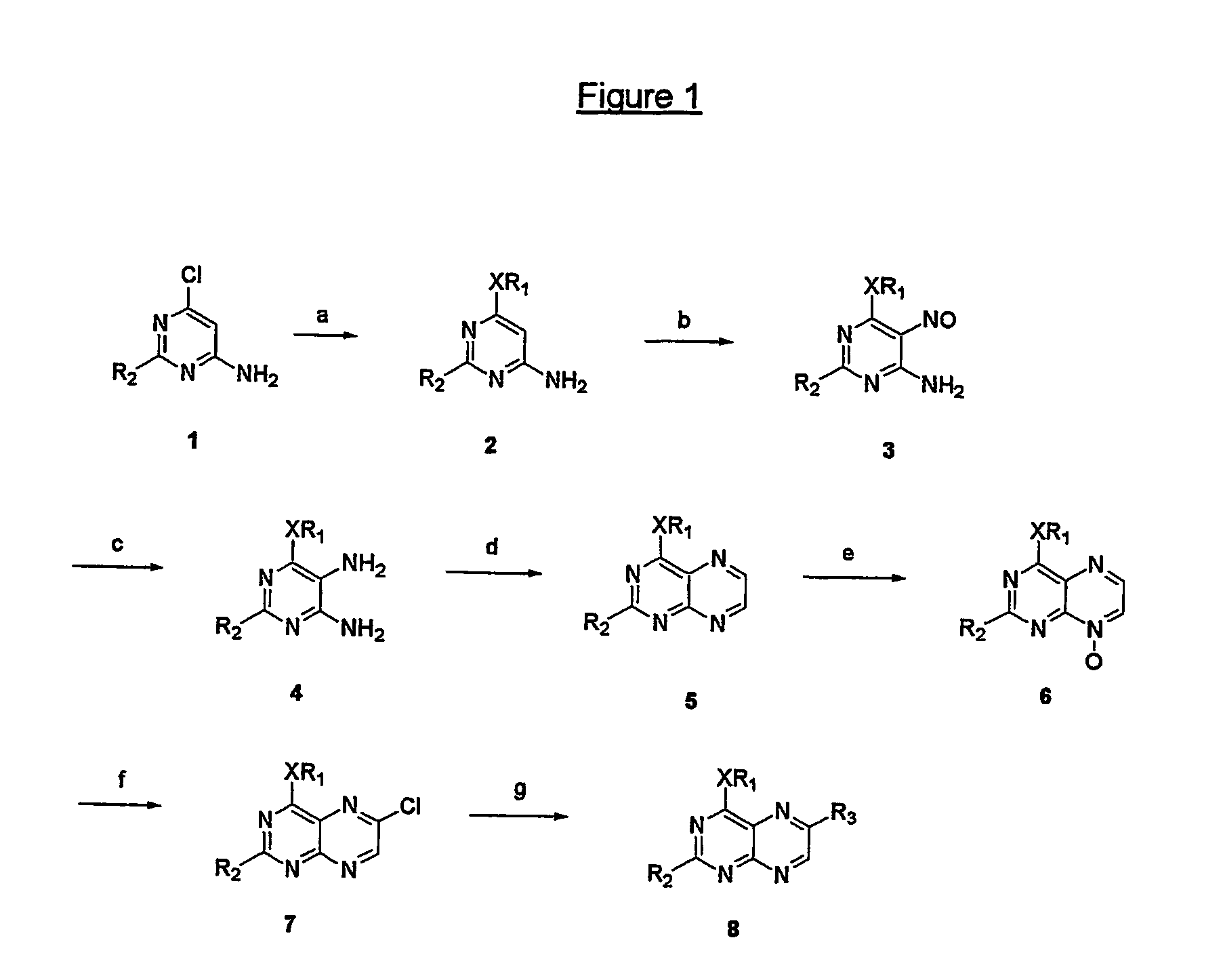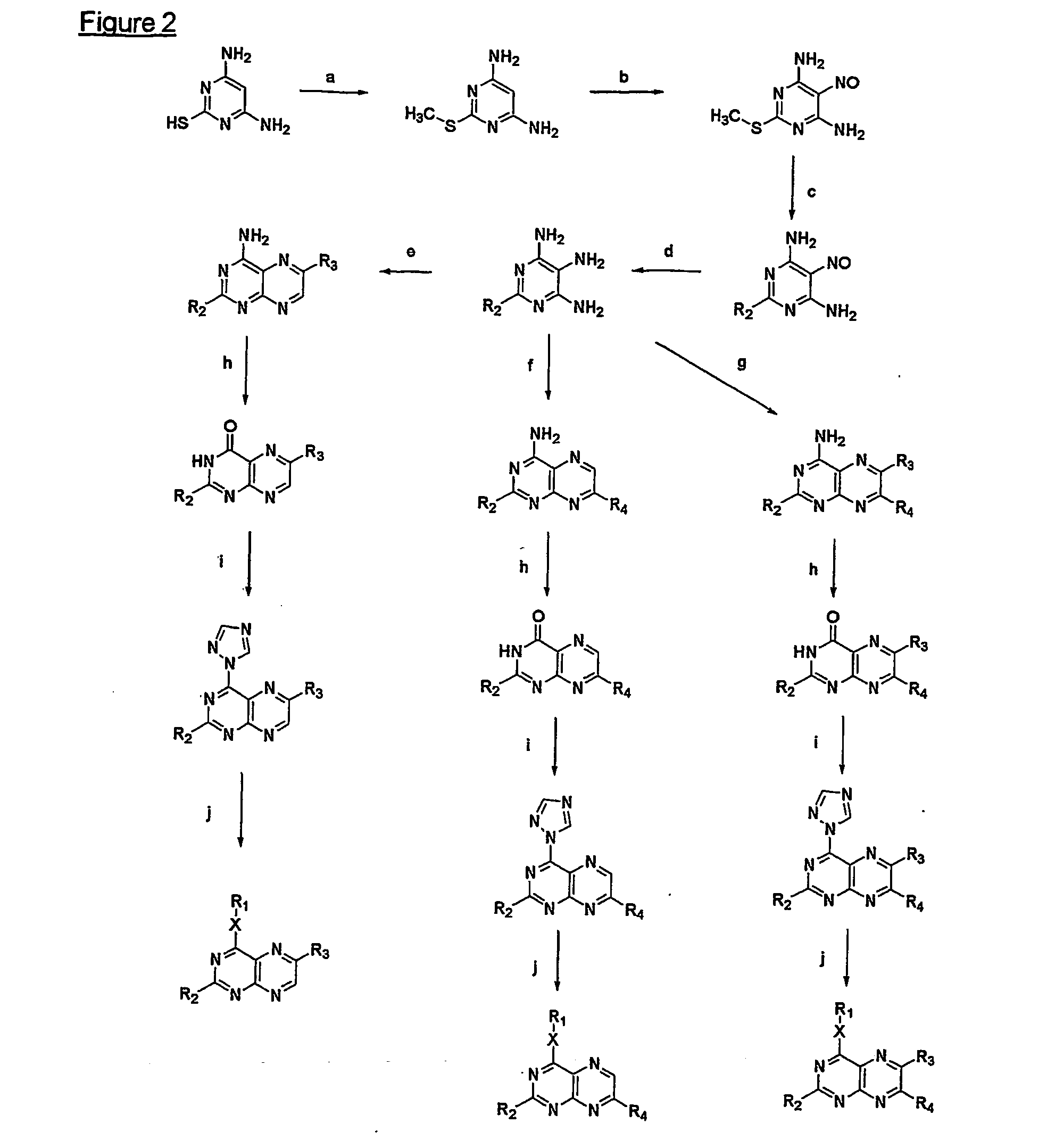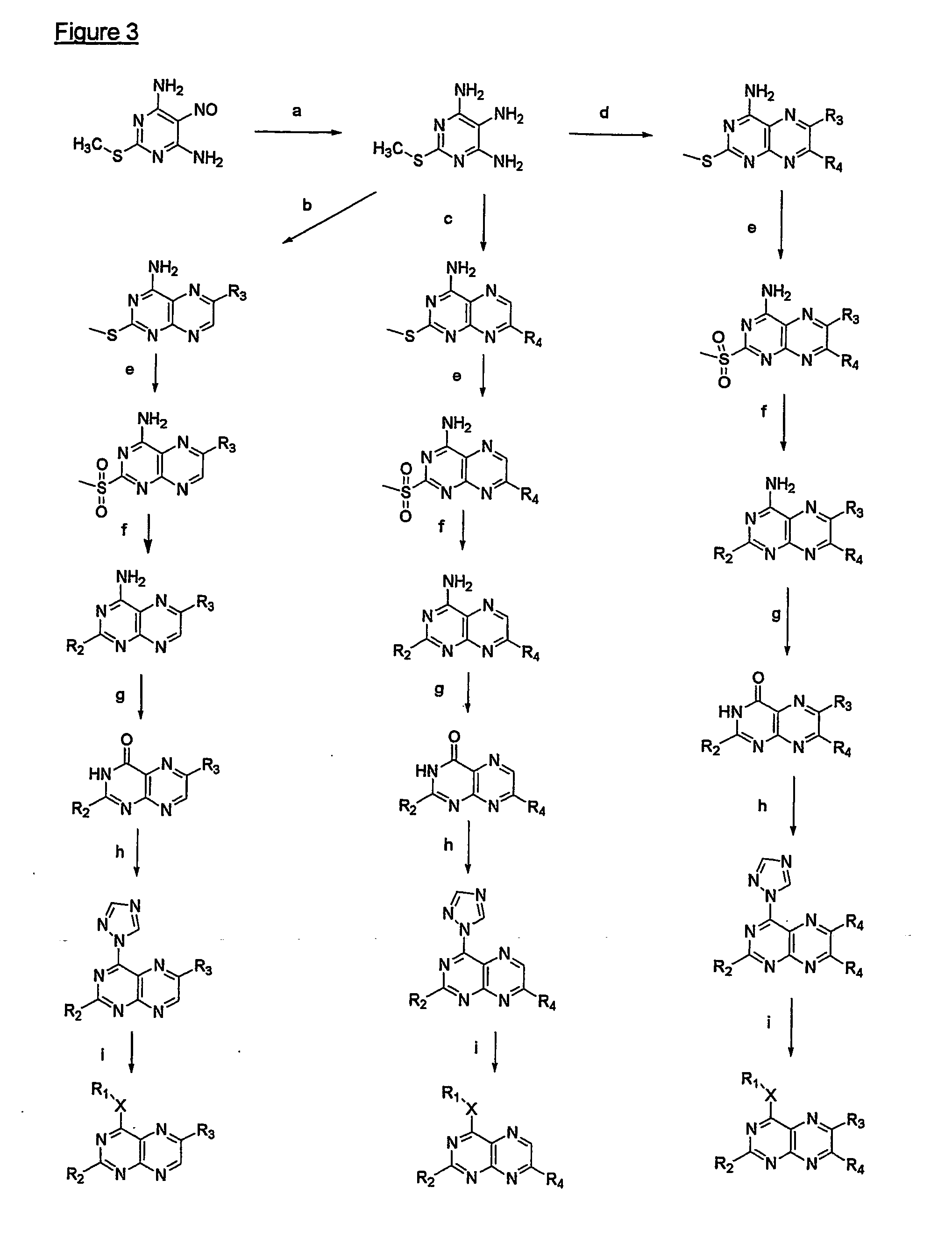Pteridine derivatives for the treatment of septic shock and tnf-a-related diseases
a technology of pteridine derivatives and septic shock, which is applied in the direction of antinoxious agents, extracellular fluid disorders, metabolic disorders, etc., can solve the problems of affecting the treatment effect of patients with severe sepsis, failure of various systems in the body, and death in intensive care units
- Summary
- Abstract
- Description
- Claims
- Application Information
AI Technical Summary
Benefits of technology
Problems solved by technology
Method used
Image
Examples
example 1
Preparation of 2-amino-4-n-pentyloxy-6-styrylpteridine
[0124] A mixture of 1.5 g (5.6 mmoles) 2-amino-6-chloro-4-n-pentyloxypteridine (e.g. available following the procedure disclosed by Mohr et al. in Helv. Chem. Acta (1992) 75:2317), palladium acetate (63 mg, 0.28 mmoles), tri-o-tolylphosphane (682 mg, 2.24 mmoles), cuprous iodide (53 mg, 0.28 mmoles), styrene (1,3 ml., 11.3 mmoles) and triethylamine 3.1 ml, 22 mmoles) was stirred in dry acetonitrile (50 ml) under reflux for 90 hours. It was evaporated and the residue purified by silica gel column chromatography with chloroform. The product fraction was evaporated to give 1.37 g (yield: 72%) of an orange powder exhibiting, after recrystallization from a EtOAc / hexane mixture, a melting point (m.p.) range of 127-128° C.
example 2
Preparation of 2-amino-6-(1,2-dibromophenethyl)-4-n-pentyloxy-pteridine
[0125] To a solution of the derivative of example 1 (1.0 g, 2.94 mmoles) in chloroform (50 ml) was added a 2 M bromine solution in chloroform (2.2 ml., 4.4 mmoles) and then the mixture was stirred at room temperature for 7 hours. It was diluted with chloroform (50 ml), washed with a saturated aqueous Na2SO3 solution (100 ml) and dried over sodium sulfate. After evaporation of the solvents, the residue was treated with toluene, filtered, washed with ether and dried in a vacuum desiccator to give 0.84 g (yield: 57%) of a yellow powder.
example 3
Preparation of 2-amino-4,7-dimethoxy-6-styrylpteridine
[0126] A suspension of the derivative of example 2 (0.3 g, 0.6 mmoles) is methanol (10 ml) was treated with 1 M methanolic sodium methoxide (3 ml, 3 mmoles) and then refluxed for 4 hours. It was diluted with chloroform (100 ml), washed with a saturated aqueous ammonium chloride solution and water and then the solution was dried over sodium sulfate. The filtrate was evaporated and the residue was purified by silica gel column chromatography while using chloroform as the eluent. The product fraction was evaporated to give 50 mg (yield: 26%) of a yellow powder with a melting point range of 197-198° C.
PUM
| Property | Measurement | Unit |
|---|---|---|
| systolic blood pressure | aaaaa | aaaaa |
| optical purity | aaaaa | aaaaa |
| optical purity | aaaaa | aaaaa |
Abstract
Description
Claims
Application Information
 Login to View More
Login to View More - R&D
- Intellectual Property
- Life Sciences
- Materials
- Tech Scout
- Unparalleled Data Quality
- Higher Quality Content
- 60% Fewer Hallucinations
Browse by: Latest US Patents, China's latest patents, Technical Efficacy Thesaurus, Application Domain, Technology Topic, Popular Technical Reports.
© 2025 PatSnap. All rights reserved.Legal|Privacy policy|Modern Slavery Act Transparency Statement|Sitemap|About US| Contact US: help@patsnap.com



